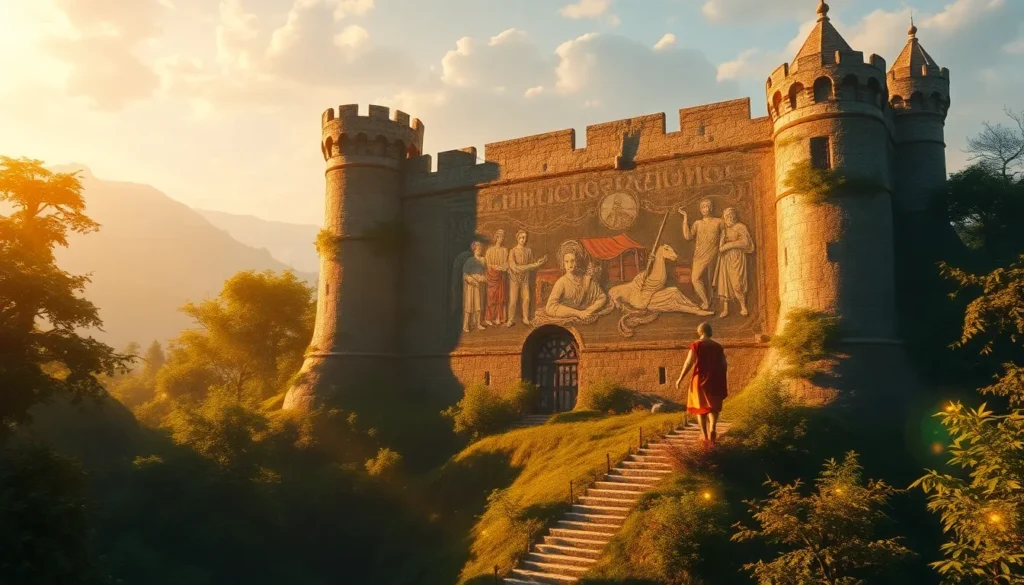In a world where dragons fly and knights clash, Elden Ring isn’t just another game—it’s a visual feast that tells a story without uttering a single word. From its sprawling landscapes to the tiniest details etched into ancient ruins, every pixel seems to whisper secrets waiting to be uncovered. Players don’t just traverse a world; they embark on a journey where the environment itself is the narrator, guiding them through tales of triumph, despair, and everything in between.
Imagine wandering through a desolate battlefield, where the remnants of past conflicts linger like an awkward family reunion. Or discovering a hidden cave, adorned with murals that reveal the lore of long-forgotten heroes. Elden Ring masterfully combines stunning visuals with intricate storytelling, proving that sometimes, a picture really is worth a thousand words. So grab your sword, and let’s dive into the mesmerizing world of visual storytelling that makes this game a masterpiece.
Overview of Elden Ring Visual Storytelling
Elden Ring employs a distinctive method of visual storytelling that captivates players. Diverse landscapes invite exploration and reveal layers of lore embedded within the environment. Each area presents a unique atmosphere, depicting themes of triumph and despair through stunning visuals.
Environmental details, such as ruined castles or enchanted forests, serve as backdrops that enhance the narrative without relying on dialogue. Intricate designs lead players to explore forgotten histories and uncovering secrets that enrich the overall experience.
Every character within Elden Ring blends seamlessly with their surroundings, adding depth to the story. Players encounter figures that reflect the game’s lore, providing context through their appearance and actions rather than spoken words.
Textures and color palettes convey emotions tied to experiences throughout the game world, creating a strong connection between players and their journey. Evocative soundscapes further amplify the visual storytelling, giving life to the environments that players traverse.
The seamless combination of art design and gameplay elevates Elden Ring’s narrative to a level that few games achieve. Each frame holds the potential for storytelling, encouraging players to piece together the rich mythology woven throughout the landscape. As players navigate through dark dungeons and expansive fields, they engage with a world steeped in mystery, compelling them to interpret what lies beneath the surface.
Elden Ring’s visual storytelling immerses players in a world where narratives unfold through exploration and observation. This approach allows players to experience a rich tapestry of events, emotions, and histories without the need for extensive dialogue.
Narrative Techniques in Elden Ring

Elden Ring employs various narrative techniques that enhance its immersive experience. Through environmental storytelling, the game invites players to explore and interpret its rich lore.
Environmental Storytelling
Elden Ring uses landscapes to communicate its narrative. Each area illustrates a distinct atmosphere, from desolate ruins to lively meadows. Players can uncover stories of past inhabitants through environmental details, such as broken statues or faded murals. The interaction with these elements reveals themes of loss, hope, and resilience. Dungeons filled with hidden lore provide context that deepens player understanding. Adventurous exploration encourages connection with the world. Areas often trigger emotions that reflect players’ journeys, making the environment a narrative device in its own right.
Symbolism and Imagery
Symbolism plays a crucial role in Elden Ring’s storytelling. Visual metaphors, including shattered kingdoms and sacred trees, convey deeper meanings. Characters sport designs that reflect their backgrounds and motivations, allowing players to infer their roles within the story. Color palettes evoke specific emotions, enhancing the overall narrative experience. Images of decay contrast with elements of life, illustrating the game’s themes of conflict and balance. This visual language transforms each scene into a piece of the larger mythos. By interpreting these symbols, players gain insight into the intricate world of Elden Ring, enriching their engagement with the game.
Character Design and Development
Character design in Elden Ring plays a pivotal role in visual storytelling. Each character embodies unique traits that enhance the game’s narrative.
The Role of Non-Playable Characters
Non-playable characters influence the player’s journey significantly. They offer quests that unveil hidden lore while enriching the world’s complexity. Character appearances often reflect their backgrounds, showcasing unique armor and weaponry that complement their stories. The diversity among NPCs adds layers to the lore, making every interaction meaningful. Each character brings context to the environments, seamlessly integrating into the game’s visual narrative.
Character Arcs and Player Interaction
Character arcs shape player experiences profoundly. Players can encounter character stories that evolve based on choices made throughout the game. These interactions often reflect themes of sacrifice, loyalty, and fate. Players witness personal transformations, revealing complexities that resonate emotionally. Different endings for characters provide additional layers of meaning, inviting players to explore various paths. The integration of these arcs fosters a deeper connection to the game’s rich world and stimulates exploration.
World-Building in Elden Ring
Elden Ring’s world-building intricately weaves lore and history into its immersive landscapes. Players encounter a rich tapestry that reveals the game’s past through environmental elements.
Lore and History
Lore in Elden Ring serves as the backbone of its world. Players uncover ancient tales through ruins and relics scattered throughout the environment. Each landmark, from crumbling castles to lush gardens, reveals details about the civilization that once thrived. Gradually, narratives unfold through subtle clues, inviting exploration. Noteworthy events etched into the game’s world echo themes of conflict, loss, and rebirth. This historical depth enriches player engagement with the setting and adds layers of meaning to their journey.
The Connection Between Locations and Narrative
Locations within Elden Ring resonate with the overarching narrative. Each area embodies distinct themes and emotions, enhancing storytelling. For instance, vibrant meadows contrast starkly with desolate wastelands, emphasizing the dichotomy of hope and despair. Important encounters often occur at pivotal sites, aligning player experiences with the unfolding story. Unique visual cues guide players, helping them connect history with gameplay. Environmental storytelling emerges through object placement, influencing the player’s perception of the world. Such connections foster deeper immersion and resonate with the themes interwoven into Elden Ring’s vast mythos.
Elden Ring stands as a testament to the power of visual storytelling in gaming. Through its breathtaking landscapes and intricate details, it invites players to engage deeply with its world. Each area unfolds a narrative rich with history and emotion, allowing exploration to serve as a means of discovery.
The thoughtful design of characters and environments enhances the overall experience, creating a seamless blend of gameplay and story. As players traverse this vast realm, they’re not just witnessing a tale; they’re living it. Elden Ring’s masterful integration of visual elements fosters a connection that lingers long after the game is over, solidifying its place as a landmark in narrative-driven gaming.





